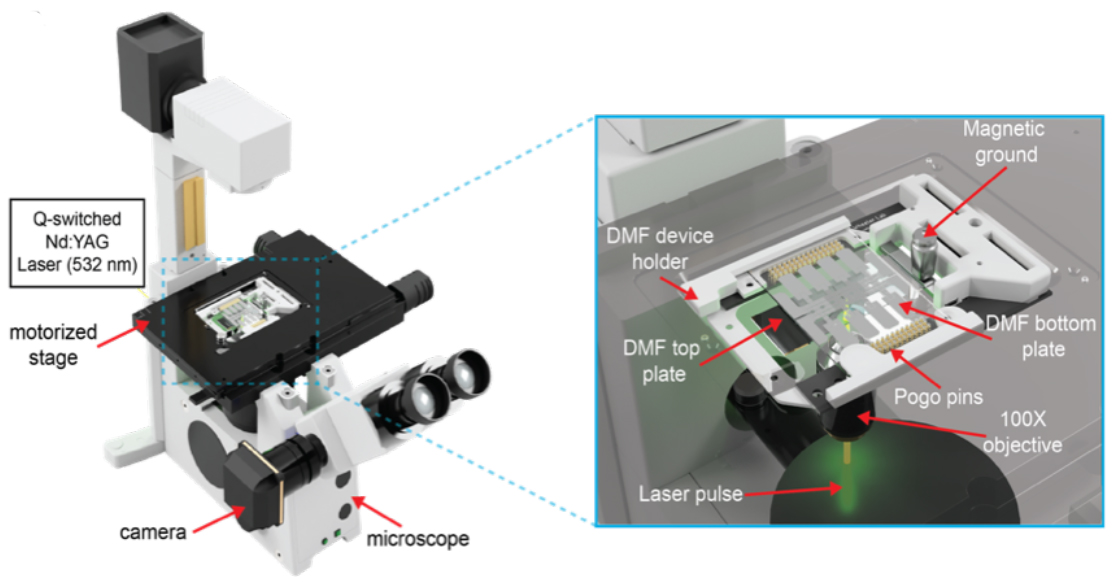Mobile Menu
-
Our Scientists
- Andrews, Brenda
- Angers, Stephane
- Attisano, Liliana
- Babaian, Artem
- Bader, Gary
- Blencowe, Benjamin
- Boone, Charles
- Brown, Grant
- Chan, Warren
- Fraser, Andrew
- Friesen, James (Professor Emeritus)
- Gilbert, Penney
- Gillis, Jesse
- Goeva, Aleksandrina
- Greenblatt, Jack
- Harrington, Lea
- Hughes, Timothy
- Kim, Philip M.
- Krause, Henry
- Montenegro Burke, Rafael (Rafa)
- Morris, John
- Morshead, Cindi
- Radisic, Milica
- Röst, Hannes
- Roth, Frederick (Fritz)
- Roy, Peter
- Ryu, William
- Sefton, Michael
- Shoichet, Molly
- Stagljar, Igor
- Taipale, Mikko
- van der Kooy, Derek
- Wang, Shu
- Wheeler, Aaron
- Yip, Christopher
- Zhang, Zhaolei
- Research
- Platforms
- Students
- Postdocs
- News
- Careers
- Events
- About Us


 DISCO is composed of a microscope fitted with a high frequency laser and a microfluidic chip for the collection of cellular material. The microscope allows the user to take detailed images of the target cell before shining the laser on it. The energy from the laser causes a tiny bubble to form and pop in the proximity of the cell, rupturing its membrane and shooting its contents up into a droplet on the microfluidic chip, from where it is retrieved for molecular sequencing.
DISCO is composed of a microscope fitted with a high frequency laser and a microfluidic chip for the collection of cellular material. The microscope allows the user to take detailed images of the target cell before shining the laser on it. The energy from the laser causes a tiny bubble to form and pop in the proximity of the cell, rupturing its membrane and shooting its contents up into a droplet on the microfluidic chip, from where it is retrieved for molecular sequencing.

